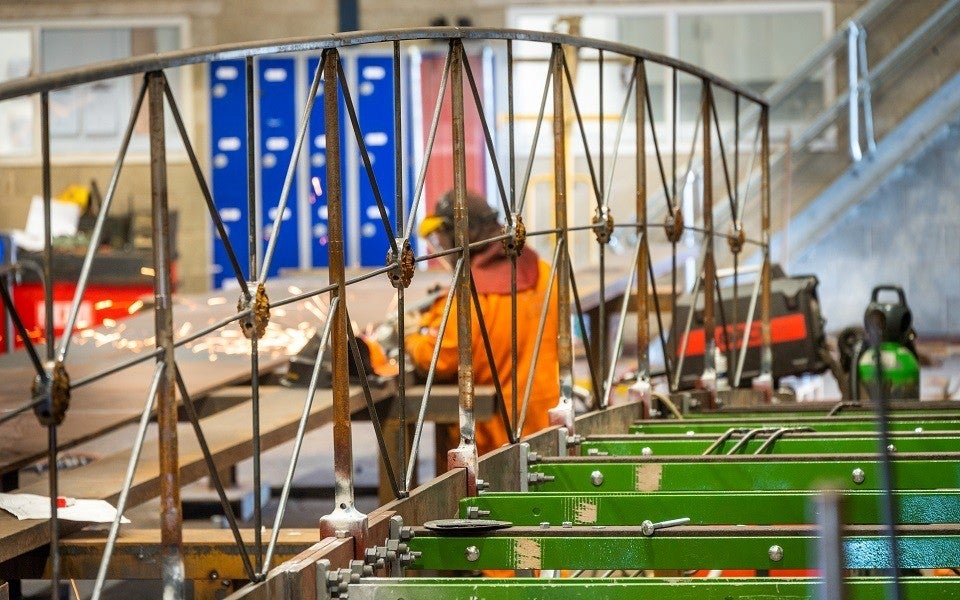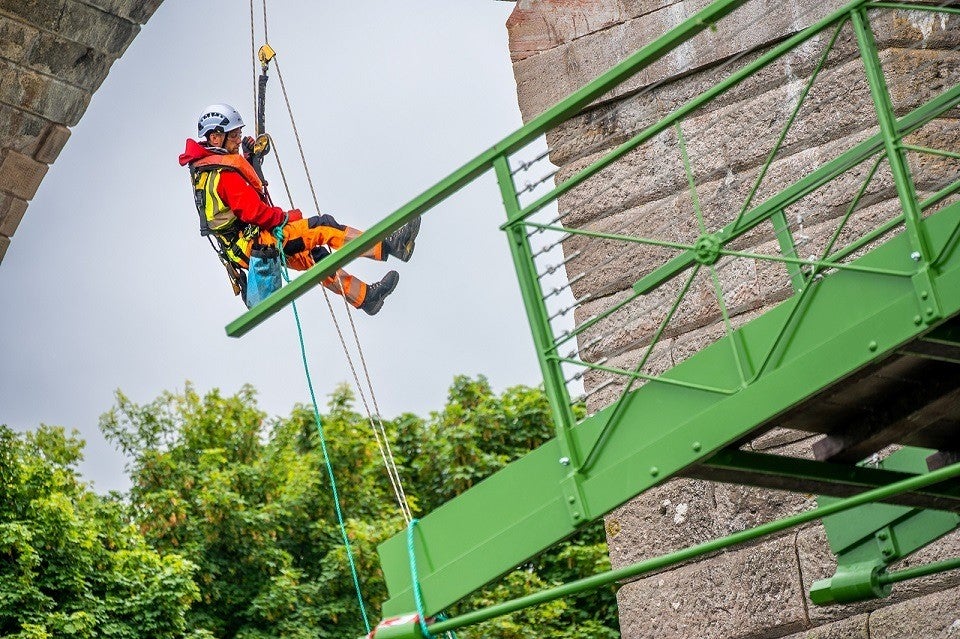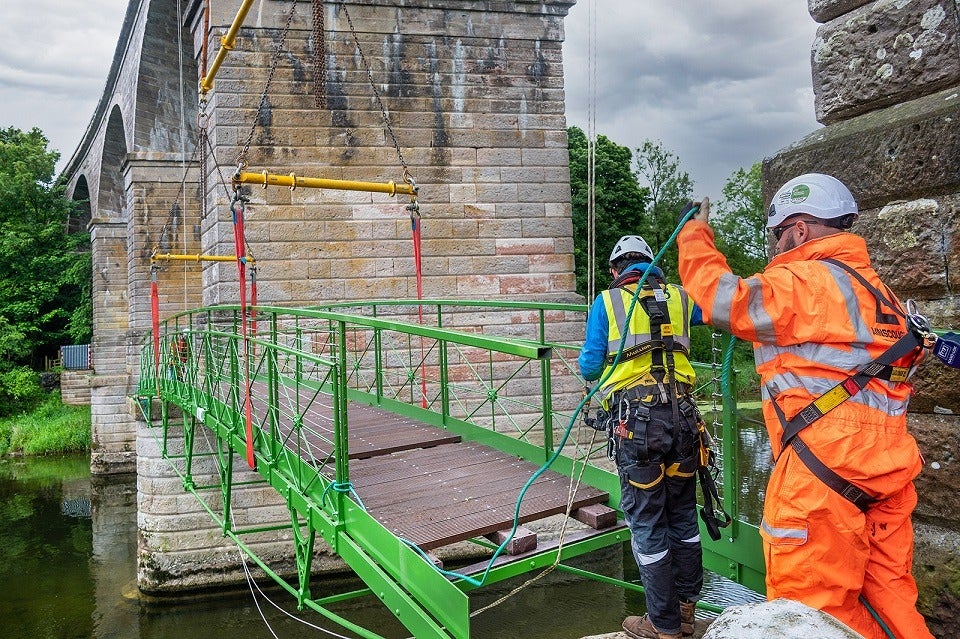
A rare Victorian footbridge has been reopened after being dismantled into 500 small pieces and painstakingly rebuilt like a jigsaw.
Work has been completed on the Teviot Viaduct near Kelso in the Scottish Borders after extensive renovation work following flooding and decay.
Engineers assessed each piece to refurbish and re-use as many as possible.

Elements beyond repair were digitally scanned so exact copies could be produced using techniques such as laser cutting, profiling, casting and welding.
The work funded by National Highways saw three spans of the viaduct dismantled at the end of 2020 and taken to Barnsley-based contractor AmcoGriffen for specialist attention.
It was dismantled and then rebuilt like a giant jigsaw before being transported to the site.
Specialist abseilers helped to reinstall the structure along with a 55-tonne crane.

Rich Marshall, National Highways historical railway estate director, said: “We’re delighted that the renovation work has been such a huge success and generations to come will be able to enjoy this beautiful historic structure.
“The footbridge had been badly impacted by flooding as well as general decay, and without these major repairs and renovations it would have become unsafe to use.
“This wasn’t a quick or easy renovation project, but it was very worthwhile and we’re incredibly proud of what has been achieved.”

The structure is usually supported by the Roxburgh viaduct on the north side. It opened in 1850 and formerly took the St Boswells to Kelso railway branch line over the River Teviot, but the line closed in 1964 and is now part of the Borders Abbeys Way.
Dave Martin, project manager for AmcoGiffen, said: “We’re very pleased that the re-installation has gone to plan and it’s been gratifying to hear the positive feedback from the local community who have been following the work on site with great interest.
“This has been one of our more challenging projects but also very rewarding because the bridge is so unique.
“It has been really satisfying to see it rebuilt to the same intricate detail as the original Victorian design, whilst sympathetically bringing the bridge up to modern safety standards.”







